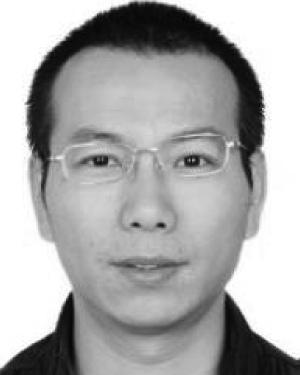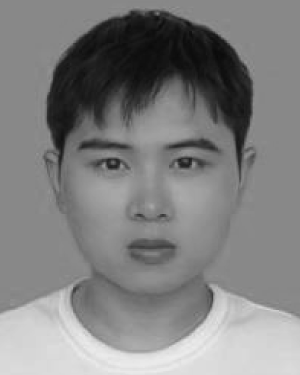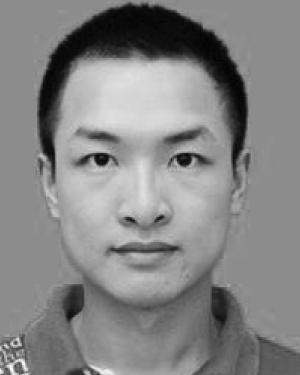Optimal topology obtained by GGA both in excluding-partitioning scenario and including-partitioning scenario
Abstract:
This paper proposes a graph genetic dynamic minimum spanning tree (DMST) optimization method for the layout designing of large-scale offshore wind farm collector system t...Show MoreMetadata
Abstract:
This paper proposes a graph genetic dynamic minimum spanning tree (DMST) optimization method for the layout designing of large-scale offshore wind farm collector system to minimize total lifecycle cost, considering both current carrying capacity and cable crossing avoiding (CCA) constraints. In this method, DMST is used to generate an initial feasible solution, ensuring a high-quality and reasonable solution at the first. Then Graph Genetic Algorithm (GGA) is applied to optimize these feasible solutions. A partitioning approach is employed to effectively reduce the complexity of the problem. This method can quickly find solutions with low total lifecycle costs while ensuring the feasibility and quality of the solution. Meanwhile, the proposed method is compared with DMST and particle swarm optimization (PSO) based algorithm, and its effectiveness and efficiency are validated through case studies of offshore wind farm projects, especially for large-scale wind farms.
Optimal topology obtained by GGA both in excluding-partitioning scenario and including-partitioning scenario
Published in: IEEE Access ( Volume: 12)
Funding Agency:

School of Electrical and Automation Engineering, Nanjing Normal University, Nanjing, China
Haiya Qian (Member, IEEE) received the Ph.D. degree in electrical engineering from Southeast University, Nanjing, China, in 2021.
He is currently a Lecturer with the School of Electrical and Automation Engineering, Nanjing Normal University, China. His research interests include new energy generation technology, microgrid optimization, and power system stability analysis.
Haiya Qian (Member, IEEE) received the Ph.D. degree in electrical engineering from Southeast University, Nanjing, China, in 2021.
He is currently a Lecturer with the School of Electrical and Automation Engineering, Nanjing Normal University, China. His research interests include new energy generation technology, microgrid optimization, and power system stability analysis.View more

School of Electrical and Automation Engineering, Nanjing Normal University, Nanjing, China
Keyu Li is currently pursuing the M.S. degree with the School of Electrical and Automation Engineering, Nanjing Normal University, China. Her research interest includes power system stability analysis.
Keyu Li is currently pursuing the M.S. degree with the School of Electrical and Automation Engineering, Nanjing Normal University, China. Her research interest includes power system stability analysis.View more

School of Electrical Engineering, Southeast University, Nanjing, China
Qingshan Xu (Member, IEEE) received the Ph.D. degree in electrical engineering from Southeast University, Nanjing, China, in 2006.
He is currently a Professor with the Department of Electrical Engineering, Southeast University. His research interests include renewable energy and power system control.
Qingshan Xu (Member, IEEE) received the Ph.D. degree in electrical engineering from Southeast University, Nanjing, China, in 2006.
He is currently a Professor with the Department of Electrical Engineering, Southeast University. His research interests include renewable energy and power system control.View more

School of Electrical and Automation Engineering, Nanjing Normal University, Nanjing, China
Shuntao Qi received the M.S. degree from the School of Electrical and Automation Engineering, Nanjing Normal University, China, in 2024. His research interest includes power system stability analysis.
Shuntao Qi received the M.S. degree from the School of Electrical and Automation Engineering, Nanjing Normal University, China, in 2024. His research interest includes power system stability analysis.View more

School of Electrical and Automation Engineering, Nanjing Normal University, Nanjing, China
Yang Ni is currently pursuing the M.S. degree with the School of Electrical and Automation Engineering, Nanjing Normal University, China. His research interest includes power system stability analysis.
Yang Ni is currently pursuing the M.S. degree with the School of Electrical and Automation Engineering, Nanjing Normal University, China. His research interest includes power system stability analysis.View more

School of Electrical and Automation Engineering, Nanjing Normal University, Nanjing, China
Feng Li (Member, IEEE) received the Ph.D. degree in electrical engineering from Southeast University, Nanjing, China, in 2021.
He is currently a Lecturer with the School of Electrical and Automation Engineering, Nanjing Normal University, China. His research interests include power system security and stability analysis and control and artificial intelligence in power systems.
Feng Li (Member, IEEE) received the Ph.D. degree in electrical engineering from Southeast University, Nanjing, China, in 2021.
He is currently a Lecturer with the School of Electrical and Automation Engineering, Nanjing Normal University, China. His research interests include power system security and stability analysis and control and artificial intelligence in power systems.View more

School of Electrical and Automation Engineering, Nanjing Normal University, Nanjing, China
Haiya Qian (Member, IEEE) received the Ph.D. degree in electrical engineering from Southeast University, Nanjing, China, in 2021.
He is currently a Lecturer with the School of Electrical and Automation Engineering, Nanjing Normal University, China. His research interests include new energy generation technology, microgrid optimization, and power system stability analysis.
Haiya Qian (Member, IEEE) received the Ph.D. degree in electrical engineering from Southeast University, Nanjing, China, in 2021.
He is currently a Lecturer with the School of Electrical and Automation Engineering, Nanjing Normal University, China. His research interests include new energy generation technology, microgrid optimization, and power system stability analysis.View more

School of Electrical and Automation Engineering, Nanjing Normal University, Nanjing, China
Keyu Li is currently pursuing the M.S. degree with the School of Electrical and Automation Engineering, Nanjing Normal University, China. Her research interest includes power system stability analysis.
Keyu Li is currently pursuing the M.S. degree with the School of Electrical and Automation Engineering, Nanjing Normal University, China. Her research interest includes power system stability analysis.View more

School of Electrical Engineering, Southeast University, Nanjing, China
Qingshan Xu (Member, IEEE) received the Ph.D. degree in electrical engineering from Southeast University, Nanjing, China, in 2006.
He is currently a Professor with the Department of Electrical Engineering, Southeast University. His research interests include renewable energy and power system control.
Qingshan Xu (Member, IEEE) received the Ph.D. degree in electrical engineering from Southeast University, Nanjing, China, in 2006.
He is currently a Professor with the Department of Electrical Engineering, Southeast University. His research interests include renewable energy and power system control.View more

School of Electrical and Automation Engineering, Nanjing Normal University, Nanjing, China
Shuntao Qi received the M.S. degree from the School of Electrical and Automation Engineering, Nanjing Normal University, China, in 2024. His research interest includes power system stability analysis.
Shuntao Qi received the M.S. degree from the School of Electrical and Automation Engineering, Nanjing Normal University, China, in 2024. His research interest includes power system stability analysis.View more

School of Electrical and Automation Engineering, Nanjing Normal University, Nanjing, China
Yang Ni is currently pursuing the M.S. degree with the School of Electrical and Automation Engineering, Nanjing Normal University, China. His research interest includes power system stability analysis.
Yang Ni is currently pursuing the M.S. degree with the School of Electrical and Automation Engineering, Nanjing Normal University, China. His research interest includes power system stability analysis.View more

School of Electrical and Automation Engineering, Nanjing Normal University, Nanjing, China
Feng Li (Member, IEEE) received the Ph.D. degree in electrical engineering from Southeast University, Nanjing, China, in 2021.
He is currently a Lecturer with the School of Electrical and Automation Engineering, Nanjing Normal University, China. His research interests include power system security and stability analysis and control and artificial intelligence in power systems.
Feng Li (Member, IEEE) received the Ph.D. degree in electrical engineering from Southeast University, Nanjing, China, in 2021.
He is currently a Lecturer with the School of Electrical and Automation Engineering, Nanjing Normal University, China. His research interests include power system security and stability analysis and control and artificial intelligence in power systems.View more

